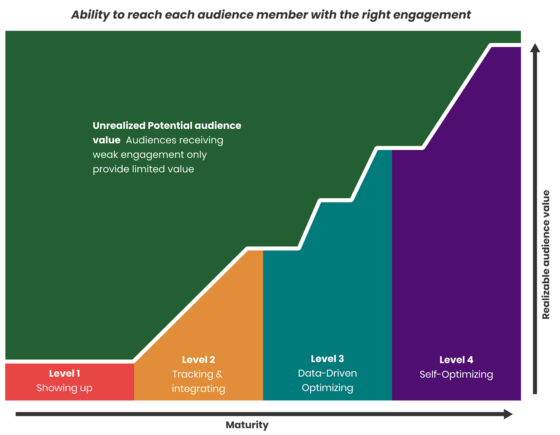TSwift said it best – “It’s Me, Hi. I’m the Problem it’s Me…”
A few weeks ago, I sat in a conference session where someone presented on Audience Engagement scores. They went over how and what they measured to identify their most loyal and engaged donors, as well as how they used this information to determine who to spend the most outreach resources on. This can be one tangible way of segmenting your audience to ensure you’re getting the most significant return on investment on the efforts you’re putting into your engagement and fundraising campaigns. No one wants to spend time engaging people who won’t or don’t want to engage back, right?
However, I’d like you to ask yourself a question. Are they the ones choosing not to engage, or is your organization failing to give potential supporters the opportunity to engage? Guess what, you might be your own problem.
Or, asking it another way: if someone in your audience shows up to where you should be and you aren’t, is their engagement score low, or is yours?
Take the following common Audience Engagement variables, and let’s flip them around:
| Audience Engagement Variable | Your Organization’s Engagement Variables that Influence the Audience Engagement Scores |
| Scoring # opens and clicks on emails | How many emails do you send?
How personalized are they? How consistent are your email sends? |
| Scoring website visits and time on pages | Is your website accessible?
How is your SEO? Is your website responsive to mobile? Do you have exciting and new content to explore? Is your content engaging? |
| Scoring volume or quality of event attendance | Do you have multiple events at different times and locations to accommodate people’s schedules, preferences, and interests? |
| Scoring the # of times or amount a person has donated | Do you make it easy to donate?
Do you ask regularly? Do you give people a variety of ways to donate? Do you ask for the right amount? |
Start by looking inward.
The bottom line is that you must have adequately assessed and scored yourself (what ParsonsTKO calls the Audience Engagement Maturity Model) to measure your audience member’s level of engagement effectively. If you haven’t done the former, you might be isolating supporters who have yet to have the opportunity to engage with you.
 So, here is my ask: If you have an audience engagement score that you’re currently using to segment your audience, take a critical look at it. Spin those variables around and ask yourself, “Are we adequately and effectively inviting our audience to engage with us through this variable?” If the answer is no or not well, you shouldn’t score your audience against it. Instead, start creating a backlog of engagement activities you need to deploy or optimize and then start measuring their effectiveness and your audience engagement against them.
So, here is my ask: If you have an audience engagement score that you’re currently using to segment your audience, take a critical look at it. Spin those variables around and ask yourself, “Are we adequately and effectively inviting our audience to engage with us through this variable?” If the answer is no or not well, you shouldn’t score your audience against it. Instead, start creating a backlog of engagement activities you need to deploy or optimize and then start measuring their effectiveness and your audience engagement against them.
We can help.
By looking at the maturity of your engagement model and deploying tactics we’ve developed through our Engagement Architecture philosophy, we can help you make sense of where your engagement is falling short. We can identify the highest priorities and how to achieve them quickly within your resource constraints. Reach out!





